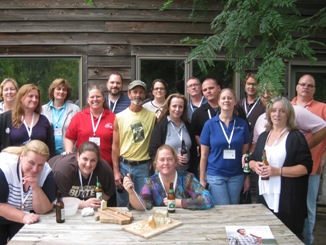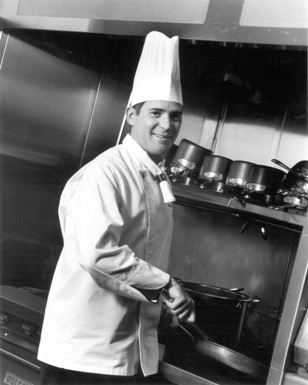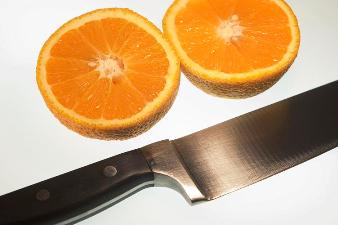Nachos, Laced with Limburger
By Lisa M. Ramsey, CEC
 Educator winners of the Wisconsin Milk Marketing Board’s 2010 healthy-cooking recipe contest through CAFÉ enjoyed a thorough and flavorful immersion in Wisconsin cheeses on tour.
Educator winners of the Wisconsin Milk Marketing Board’s 2010 healthy-cooking recipe contest through CAFÉ enjoyed a thorough and flavorful immersion in Wisconsin cheeses on tour.
The subject line of the email read “You’re All Winners!”, and of course that sparked my curiosity. A few weeks earlier I entered a contest for culinary educators asking us to create a healthy recipe using any type of Wisconsin cheese. Could it be? YES! I won along with 19 other educators from across the country and Canada. Within a few weeks we were whisked away to Madison, Wis. I found myself at Sardines standing in front of a table full of cheese and wine discussing recipes with several other educators. Our gracious hosts were Sara Hill from Wisconsin Milk Marketing Board and Mary Petersen from CAFÉ. They brought us together to celebrate and meet several cheesemakers and farmers. After a wonderful dinner and conversation, it was off to the hotel to rest up for three days’ full of tasting and touring.

 Online resources from the turkey industry will help students better understand how to deliver customer satisfaction while contributing to a healthy bottom line amid a “perfect storm” of challenges for operators.
Online resources from the turkey industry will help students better understand how to deliver customer satisfaction while contributing to a healthy bottom line amid a “perfect storm” of challenges for operators. More easily applied in the culinary lab than the classroom, keep the learning active, engaging and authentic.
More easily applied in the culinary lab than the classroom, keep the learning active, engaging and authentic. Part of Berkeley’s now-famous “gourmet ghetto,” TV cooking personality, author, restaurateur and chef John Fields says he’s done with pretentious food.
Part of Berkeley’s now-famous “gourmet ghetto,” TV cooking personality, author, restaurateur and chef John Fields says he’s done with pretentious food. Students give high marks to reporting on current events—even though it requires more work from them—and indicate they learn more as a result.
Students give high marks to reporting on current events—even though it requires more work from them—and indicate they learn more as a result. Part 1 of a two-part series from Chef Weiner on advising your students on selecting and maintaining knives.
Part 1 of a two-part series from Chef Weiner on advising your students on selecting and maintaining knives. Florida—not California—is the nation’s largest producer of fresh tomatoes. This lesson plan will assist in demonstrating how increased menu usage of Florida tomatoes can increase profitability.
Florida—not California—is the nation’s largest producer of fresh tomatoes. This lesson plan will assist in demonstrating how increased menu usage of Florida tomatoes can increase profitability. When Rochelle Huppin enrolled at The Culinary Institute of America (CIA) in 1985, she was not comfortable in the polyester student-issue chef's uniforms of the day. With a doctor's note saying she was allergic to synthetic fabrics, she was allowed to wear a pair of handmade all-cotton houndstooth print pants.
When Rochelle Huppin enrolled at The Culinary Institute of America (CIA) in 1985, she was not comfortable in the polyester student-issue chef's uniforms of the day. With a doctor's note saying she was allergic to synthetic fabrics, she was allowed to wear a pair of handmade all-cotton houndstooth print pants.